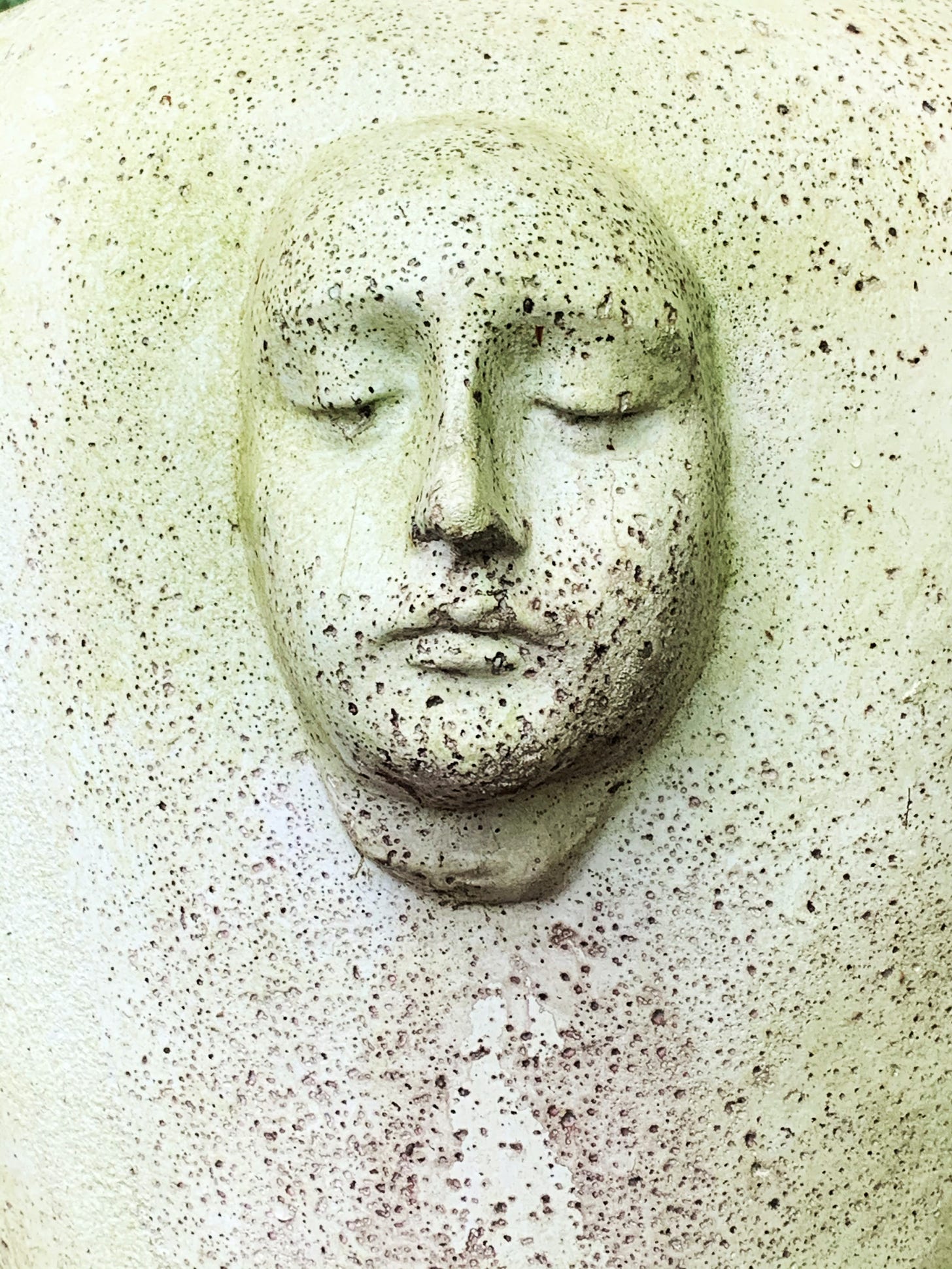No one can see where the pain is or knows when it will come again, hurling flashbacks when least expected. The scars of life and death trauma(s) stay hidden behind your “normal” self. Repeated trauma is referred to as “complex PTSD” (CPTSD) and are deeply ingrained in the psyche. The contours of your face echo a facade of happiness when just beneath the surface the darkness is lurking. Something you don’t understand, but it’s there.
I’m venturing into the world of understanding the nervous system better and how I can “reset” mine. My thermostat is cranked too far and my hyper-vigilant state is very tiring. My body needs to rest. I want to break the cycle of muscle tension that plagues my upper back, especially when standing in one position for very long. My upper teeth are shot and need to be pulled. I’ve broken to many of the top ones from grinding and clenching over decades of silent pain.
The body remembers what the brain tries to forget. Trauma happens to war veterans but it also happens to many others, even babies. The scars are carried inside for a lifetime, unless we understand how the nervous system works and learn to regulate our bodies without drugs and alcohol. Many addictions are a result of dysregulation and the search for balance.
In the video below Janet shares the struggles for her husband and their family. He lives with PTSD from his time in the service and being “in country”.
Understanding PTSD’s Effects on Brain, Body, and Emotions | Janet Seahorn TEDxCSU
The Polyvagal Theory and the Vagus Nerve
The Polyvagal Theory was presented in 1994 by Stephen Porges, a psychologist who went beyond the current dogma of the nervous system. Previously the nervous system was explained in physiology classes as the sympathetic and the parasympathetic branches; or also known as “fight or flight” and “rest and digest”.
Now Stephen Porges explains the Polyvagal Theory and introduces a new concept to throw the world of psychology on it’s proverbial head. The theory means poly meaning many and vagal referring to the vagus nerve (also known as the “wandering” nerve) which consists of the Dorsal Vagus and the Ventral Vagus. The vagus nerve carries information from the brain to the body and from the body to the brain and controls bodily functions in the entire body, including the organs.
One in five Americans are diagnosed with mental illness in any given year [1]. Suicide is the second most common cause of death in the US for youth aged 15-24 [2], and kills over 700,000 people a year globally [3] and 48,300 in the USA [4]. Drug overdose kills 81,000 in the USA annually [5]. The autoimmunity epidemic affects 24 million people in the USA [6]. What is going on?
What kind of insanity covers our basic human nature? — Gabor Mate
Can our deepest pain be our doorway to healing? - Gabor Mate
Trauma and the Nervous System: Stephen Porges & Gabor Maté
Vocal Modulation and Auditory Sensitivities
I like the way Emma McAdam explains PTSD and the Polyvagal Theory (in the video below) and how it affects someone who experiences trauma. I also like listening to her voice, it is calming and puts me in a very relaxed state. Her voice is modulating in a motherly tone which is instinctively what the human ear craves to hear. The voice of safety and calmness, the sounds of a mother’s love.
Many people who’ve experienced trauma have sensitivities to loud and sudden noises and being touched unexpectedly. I refrained from posting many videos due to bad audio because of my auditory triggers. My hearing is in the high frequencies and is what the audiologist referred to as “dog ears”. Thank goodness my husband hears low frequencies, so we balance each other out nicely.
The calmest frequencies, the one most desired by the human ear are in the mid range, that of a mother’s voice. Emma has lots of videos and I highly recommend checking her YouTube channel out, Therapy in a Nutshell for more videos on PTSD and others. She is a licensed therapist and she helps explain things in a way you can understand.
How Trauma and PTSD Change the Brain
Finding My Ventral Vagal State - “My Happy Place”
When I need to “chill” I’ll put on relaxing classical music and/or lullabies. I’ll bring out my adult coloring book and my colored pencils and color to my heart’s content or until I need to make dinner, whichever comes first. When I go into my studio and spend time coloring with my CDs playing in the background my body finds it’s ventral vagal state, a place of calm. When something upsets me and pushes me into an agitated mood I know how to regulate my temperment and with that my emotions. I go to my room and I play. I become a child again.
Things don’t bother me nearly as much now. I’ve learned to stay away from toxic people and turned off the news from all sources. I spend less time on social media and the internet (except for research).
My anxiety level is down several notches. I now know what calm feels like I can remind my body and relax. One day I hope that the calm state or ventral vegal is my default nervous system setting. When stress inevitably happens I’ll be more regulated and keep my body’s response to a minimum. Less tension and lower blood pressure.
I see the light at the end of the tunnel. I see hope in a chaotic and bleak world — somewhere out there where trouble hides. I know I’m here and I’m safe.
[1] National Alliance on Mental Illness
[2] Centers for Disease Control and Prevention
[3] World Health Organization
[4] Centers for Disease Control and Prevention
[5] Centers for Disease Control and Prevention
[6] National Institutes of Health





